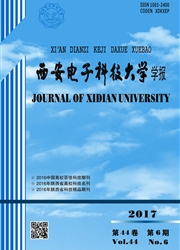

 中文摘要:
中文摘要:
频率选择性高斯干扰信道下多用户总速率最大化的问题被建模成一个带有补偿函数的非合作博弈模型.补偿函数也近似成子信道之间进行博弈的模型(子信道博弈).通过子信道之间的迭代计算,子信道博弈能够达到一个纳什均衡,也就是渐近最佳补偿.接着提出了多领导斯坦克尔伯格均衡的概念,来描述带有渐近最佳补偿函数的非合作博弈的均衡点.利用凸优化技术,开发了一种迭代多水平面功率注水算法,来达到斯坦克尔伯格均衡.在该均衡点上,所有用户都会工作在准最佳速率区域边界上.仿真结果表明,迭代多水平面功率注水算法所能达到的总速率比迭代功率注水算法有明显的提高,并且能达到一个准最佳的可达速率区域.
 英文摘要:
英文摘要:
This paper considers an optimization problem of sum-rate in the Gaussian frequency-selective channel. This problem can be modeled as a competitive game model with a compensation function. We find that the compensation function can also be modeled as a game among sub-channels (called subchannel game in this paper). In an iterative fashion, the Nash equilibrium of the sub-channel game can be reached, which is the asymptotically optimal compensation term. Stackelberg equilibrium with multiple leaders is introduced to represent the equilibrium point of the competitive game model with a compensation function. At the equilibrium point, all users operate on the optimal rate region frontier. Then, an iterative multiple water-levels water filling algorithm is proposed to efficiently reach the Stackelberg equilibrium. Simulation results show that our proposed algorithm has a significant improvement on the sum-rate compared with IWFA and exhibits the quasi-to-optimal performance.
 同期刊论文项目
同期刊论文项目
 同项目期刊论文
同项目期刊论文
 The Periodic Half-width Microstrip Leaky-Wave Antenna with a Backward to Forward Scanning Capability
The Periodic Half-width Microstrip Leaky-Wave Antenna with a Backward to Forward Scanning Capability A New Time Domain Solution for the Multiple Diffraction of Spherical Waves by an Array of Nonperfect
A New Time Domain Solution for the Multiple Diffraction of Spherical Waves by an Array of Nonperfect Nonbinary LDPC codes constructed based on a cyclic MDS code and a low-complexity nonbinary message-p
Nonbinary LDPC codes constructed based on a cyclic MDS code and a low-complexity nonbinary message-p Linearly time-varying channel estimation and training power allocation for MIMOOFDM systems using su
Linearly time-varying channel estimation and training power allocation for MIMOOFDM systems using su Linearly Time-Varying Channel Estimation and Symbol Detection for OFDMA Uplink Using Superimposed Tr
Linearly Time-Varying Channel Estimation and Symbol Detection for OFDMA Uplink Using Superimposed Tr Optimal Estimation of Linearly Time-Varying MIMO/OFDM Channels Modeled by a Complex Exponential Basi
Optimal Estimation of Linearly Time-Varying MIMO/OFDM Channels Modeled by a Complex Exponential Basi 期刊信息
期刊信息
